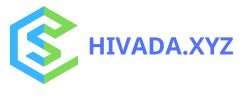A 12-step FAIR data fabric program for recovering application addicts



Andrew Holloway on Pixabay
The overwhelming majority of companies have been addicted for just a few years to software-as-a-service functions. Month after month, organizations worldwide pay tens of billions of {{dollars}} in efforts to accumulate “simple,” on-demand choices to the problems of the day.
Nonetheless the choices are on no account simple. Most apps on no account really ship on their ensures. Prospects typically get the blame.
It’s on no account really the equipment’s fault. Instead, the purchasers didn’t really do what they should ought to make the equipment work as designed.
Years later, further suppliers make compelling pitches. The an identical companies try to work the problem from the vantage stage of newest suppliers or at least a model new period of apps, committing to but another subscription.
The result from a workflow perspective is a doom loop of fragmentation, forcing prospects to dive course of after course of into as many as a dozen or further utterly totally different functions to get their work executed.
Typical SaaS and totally different enterprise functions do three points:
- A way for info enter
- A way for information output
- Connections to enter and output workflows
For that function, each utility turns into one among many black containers, each of which duplicates or overlaps the others’ options. Moreover, each new SaaS supplies a model new and utterly totally different info model to the mix, implying a steadily rising integration workload for people who’re making an attempt to utilize utility info downstream in a unified model.
Mockingly, by indiscriminately subscribing to more and more extra SaaSes, enterprises are together with one different layer of complexity on prime of an already troublesome situation.
Information graphs, in distinction, allow the visibility and shareability of frequent options and knowledge. Information graph construction encourages the elimination of sensible and knowledge duplication.
SaaS spending and the related info drawback
In 2024, world SaaS spending will attain $247 billion, rising to $295 billion in 2025, according to Gartner, a improvement cost of over 19 p.c.
By unthinkingly throwing good money after unhealthy in pursuit of the killer cloud app, administration continues to show a disregard for the premise disadvantage — the need for the workforce to get fingers on with info as an organically evolving asset, an asset more and more extra in demand considering the enlargement of AI.
With a info graph to anchor the occasion of an enriched, reusable, interoperable info asset, a corporation can work in the direction of a dynamic info fabric for all functions. The ultimate phrase goal with info graph is findable, accessible, interoperable and reusable (FAIR) info for the duties at hand.
SaaSes can flip into a big obstacle to a info graph enchancment effort. SaaSes by definition vest accountability with the service provider to do the knowledge administration. By handing that accountability over, organizations create a situation by which the group doesn’t even administration its private info, and has to ask permission from the provider to get that info.
The selection is to shift funding to info graph enchancment. Such funding makes it doable for the group’s private workforce to commit, space by space, to a scalable FAIR info enchancment program. Such a program dovetails correctly with enterprise AI info desires, in precise truth.
The muse purpose behind AI failures: An absence of purpose-built FAIR info to feed the AIs
Vernon Keenan, an analyst for SalesforceDevops.netreported in August 2024 on a RAND Firm analysis which estimated that 80 p.c of firm AI duties fail. “The most common purpose behind AI problem failure?” He requested. “It’s not the know-how – it’s the parents on the prime. Enterprise leaders usually misunderstand or miscommunicate what points must be solved using AI. As one interviewee put it, ‘They assume they’ve good info because of they get weekly product sales research, nonetheless they don’t perceive the knowledge they’ve at current couldn’t meet its new purpose.’”
The backstory evident behind each AI failure is the inadequacy of the overall info lifecycle administration technique of the organizations in question. AIs need higher than the sparse tabular, numerical info organizations typically take into account first in relation to the knowledge they inventory; in its place they need the richness of a holistically built-in, contextualized multimedia info setting, with information from every kind of sources, systematically collected and described in a graph that scales.
12 steps to a contextualized info fabric
12-step packages help by determining and addressing root psychological points that end in abuse and addition.
Using a 12-step program, many firms can come clear with the state of their info circumstance. They’ll set up and embrace the most effective strategies to rectify the situation. Information graphs current a ready, established means of remodeling present sources into discoverable, reusable and even interoperable property. A reduction in overspending on SaaS apps can fund such a info graph effort.
Listed under are 12 steps organizations can use to return to phrases with their info points and develop a way of overcoming these points.
- Decide and admit the extent of the system’s most deeply rooted info points.
- Redefine enterprise requirements in gentle of newest info requires akin to AI.
- Work together enterprise unit professionals with space info throughout the areas associated to requirements as a neighborhood of information stewards.
- Design and undertake an info lifecycle administration program that harnesses info graph power.
- Inventory and catalog all present info associated to current desires.
- Collect further info suited to current requirements with the help of enterprise unit info stewards.
- Clear the knowledge and contextualize it with a unitary, semantic graph info model that will flip into the mum or dad for each space’s info model kids.
- Harmonize the knowledge and knowledge graph metadata for sharing and interoperability capabilities.
- Enable solutions loops for usability, info administration and refinement capabilities with the help of a search carry out.
- Improve the utility of the knowledge graph and proceed desiloing efforts with the help of pure language processing, superior analytics, reasoning and totally different capabilities.
- Kind out new use circumstances and evolve the graph case by case.
- Plan for model new capabilities akin to event-based and stream-oriented graphs.
Key to success with such a 12-step program is a seamless give consideration to desiloing. Leaders along with technologists and enterprise unit info stewards wish to stick with desiloing guidelines. In every other case, the model new means of information fabric constructing and administration obtained’t scale.





